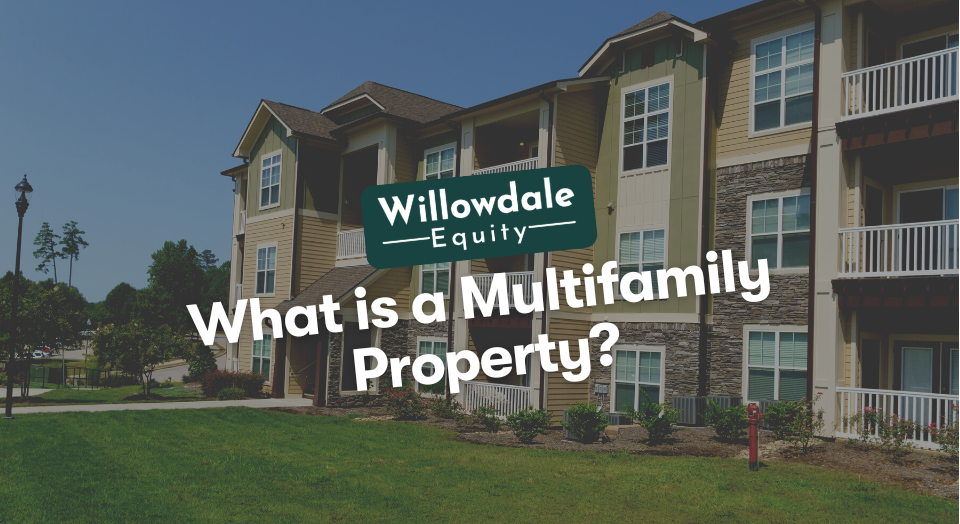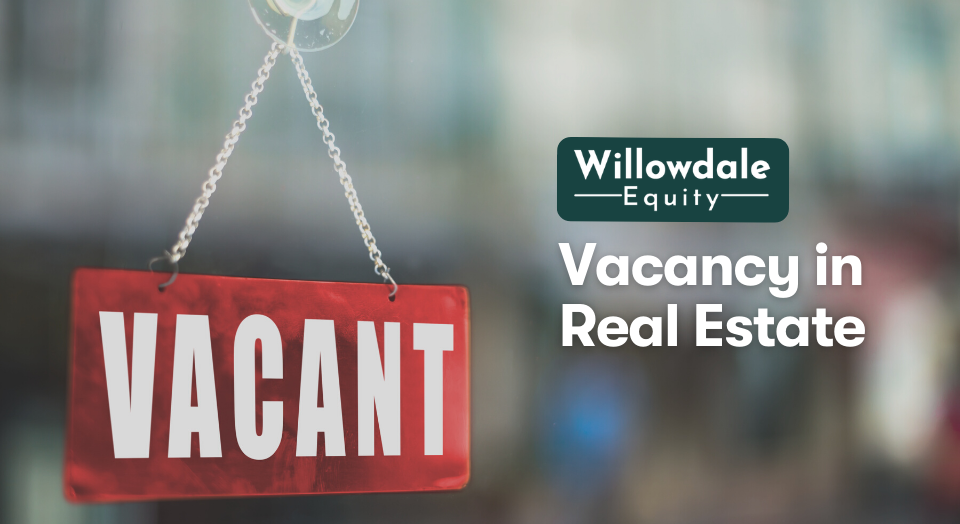
What is Multifamily Property?: The Multifamily Asset Class EXPLAINED
This article is part of our passive investors guide on real estate syndications, available here.
Many people want to invest in rental properties but are unsure where to start. Many investors consider purchasing multifamily real estate to be a natural first step. Multifamily properties are an excellent way to start investing in real estate if you’re interested in doing so.
Because most individuals can understand this asset class since they have owned a home or rented a unit in an apartment building in the past, multifamily real estate investing is a preferred real estate investing type today.
For new real estate investors, multifamily homes can be a wonderful place to start when purchasing assets that produce passive income. However, because they feature numerous units for multiple households, these assets require significant day-to-day operation.
In this article, we’ll go through everything you need to know about a multifamily property, including what it is, the different types, and how it is built. Also, we’ll dive into the increasing demand for multifamily real estate and why it is seen as the gold standard by many real estate investors today.
Key Takeaways
-
A multifamily property is an apartment complex or building with numerous units. They might be as small as a duplex with two families or as large as a high-rise apartment complex with hundreds of apartments.
-
The multifamily sector’s outstanding performance during the pandemic was driven by rising rental rates, a shrinking supply of single-family apartments and houses, low lending rates, increased building costs, and robust demand for housing nationwide.
-
For investors, multifamily real estate has excellent tax benefits. Investors can use depreciation to offset a sizable portion of the annual rental revenue they receive from their multifamily properties.
-
Having multiple tenants means spreading out the tenant base’s diversity, which might include diverse employment across several industries.
What is Multifamily Property? (Multi Family Real Estate Definition)

A multifamily property is an apartment complex or building with numerous units. They might be as small as a duplex with two families or as large as a high-rise apartment complex with hundreds of apartments.
Here, it is essential to note that when the property has five plus units, it’s considered commercial in the eyes of a lender as opposed to residential, even though you are still providing residential housing in both scenarios.
As they are generally similarly funded by banks as single-family houses, two- to four-unit multifamily properties are an excellent opportunity for beginner investors who want to be active operators and test the waters in the residential rental property market. Many investors will start by taking ownership of a small multifamily building. They might live in one unit while renting the other (s). There are numerous advantages to doing so.
Owner Occupied Multifamily
Owner-occupied residences, for instance, sometimes qualify for more favorable funding with lower interest rates and smaller down payments. Investors can more readily manage the property if they live on-site. This strategy is often referred to as “house hacking”. The majority of these smaller properties are self-managed by the owner. It can result in monthly property management fee savings of several hundred dollars.
Typically, investors will purchase a multifamily building without an owner occupying it and assign a property manager to run the day-to-day operations.
Now that you have a basic understanding of multifamily property, we can explain the different types of real estate.
Related Reasd: Multifamily Real Estate As A First Investment
Types of Multifamily Property
For centuries, investment in commercial real estate has given investors access to significant tax benefits, consistent cash flow, and rapid asset appreciation.
The benefits can vary depending on the real estate asset class you choose to invest in. One of the best and most secure asset classes for investing in real estate is multifamily real estate.
Single-family homes can be rented out in part or in full, but multifamily properties have other unique features.
Each apartment might have its own address, bathroom, kitchen, and sometimes its own entrance. However, due to shared walls, those living in multifamily homes could experience less privacy than those living in single-family homes.
There are several distinct types of multifamily homes to take into consideration, each having a unique offering in terms of design and living space.
The four main types of multifamily property are:
- Duplex/Triplex: Two apartments or houses that are joined by a standard ceiling, wall, or floor are referred to as duplexes. Triplexes contain three. In a duplex or triplex, each residence has its entrance. Additionally, the units could have their own garages and yards.
- Apartment Complex: An apartment community could be a large multiple-story building or building or a garden-style 1-2 story property comprised of buildings with five or more units per building. These are generally regarded as communities and may have amenities such as a pool, leasing center, parking, etc.
- Townhouse: Townhouses or townhomes are residences connected by a common wall, much like duplexes. There are typically two or three stories in them. They are larger than apartments and typically require less upkeep and repairs than a single-family home.
- Semi-detached house: Semi-detached dwellings share a wall with another house, just like townhomes do. Townhomes are often smaller than semi-detached dwellings, though. These houses might be less expensive than a standalone single-family house. The possibility of semi-detached property owners splitting maintenance costs might also provide less expensive maintenance.
With the different types of multifamily real estate covered, it’s time to note some things about building a multifamily property.
Building Multi Family Properties

Building Class B and C multifamily properties can be un-economical due to rising material and labor costs, supply chain, and inflation-related issues.
Most new builds can only be underwritten to high market rents, Class A-type rentals. This is because, with these high building costs, high market rents are the only thing that can make the project a profitable venture.
This means that the demand for housing in the affordable unit type and more workforce housing demographic will continue to have further supply constraints.
The good news is that the demand for multifamily property remains strong, and in the following section, we’ll dive into why.
Why is there Such a Strong Demand for Multifamily Property?
Larger institutions and investors generally allocate their capital toward the multifamily asset class because of how well-insulated it proved during the pandemic.
The multifamily sector’s outstanding performance during the pandemic was driven by rising rental rates, a shrinking supply of single-family apartments and houses, low lending rates, increased building costs, and robust demand for housing nationwide.
While the economic effects of the pandemic were still being felt by other commercial property types, including hospitality and retail, demand for multifamily housing increased during the outbreak, and this trend is expected to continue.
Optimistic projections for the multifamily industry have caused investors to invest more money in the asset class. If there are no obstacles that could impede demand, several industry analysts believe that multifamily housing prices will continue to grow over the long term.
Of course, there are more reasons investors love multifamily; we will explore some of them in the section below.
Why Investors Love Multifamily

Multifamily homes are the most prevalent form of property, partly due to their strong monthly cash flow and steady growth, making investing in them a highly popular approach among investors. Some of the reasons to invest in multifamily properties include:
- Diversified Tenant Base: Having multiple tenants means spreading out the tenant base’s diversity, which might include diverse employment across several industries.
- Property Management Efficiency: Typically, single-family homes don’t make enough money to warrant engaging a property management firm. However, the income a multifamily property produces usually enables investors to employ a property manager to take care of day-to-day operations and deal with any repairs. This can significantly benefit investors who want less involvement with their rental homes.
- Ability to Scale: The flexibility to scale one’s holdings among this asset class is another reason multifamily appeals to investors. Being able to run a much more efficient operation with one insurance plan, one tax bill, one mortgage, and so on makes buying multiple units in a given purchase easier to scale your portfolio.
- Stronger Financing Options: Multifamily properties are more likely to be accepted by a bank for a loan than a typical home. At first glance, it might appear that getting a loan for a single-family home would be much easier than trying to obtain financing for a million-dollar apartment building. But that is not the case. Multifamily real estate continuously produces a solid cash flow each month. It holds true even if a building has a few vacant units or tenants late on their rent.
- Tax Advantages: For investors, multifamily real estate has excellent tax benefits. Investors can use depreciation to offset a sizable portion of the annual rental revenue they receive from their multifamily properties.
- Larger Tenant Base: Multifamily buildings feature several units and reduce the overall economic loss for investors, better absorbing vacancy as opposed to single-family where if you have a vacancy, your 100% vacant, and now you need to pay the mortgage and cover all the costs until you can lease it up.
Frequently Asked Questions about what is Multifamily Real Estate
Any residential property with more than one housing unit is a multifamily home. A good illustration of a multifamily residence is a duplex, townhouse, or apartment building.
An apartment or multifamily property are essentially interchangeable terms. Still, it is essential to note that in some markets, apartments could also be referencing a unit that the individual resident owns, unlike the true definition of it being a rental unit.
What is Multifamily Property – Conclusion
Those interested in purchasing rental property should examine multifamily investments closely. Investors might start slowly by purchasing just two or four units in this asset class at a time. Remember that starting is the most crucial step in real estate investing.
There are also more efficient ways of investing in multifamily property without having to wear every hat yourself or having all the knowledge to do so.
One way is joining the Investor Club here at Willowdale Equity. Joining gives you access to private value-add multifamily investment opportunities across the southeastern United States that you can passively invest in.
Sources:
- Investopedia, “3 Reasons to Invest in Multi-Family Real Estate“
Interested In Learning More About PASSIVE Real Estate Investing In Multifamily Properties?
Get Access to the FREE 5 Day PASSIVE Real Estate Investing Crash Course.
In this video crash course, you’ll learn everything you need to know from A to Z
about passive investing in multifamily real estate.
We’ll cover topics like earned income vs passive income, the tax advantages, why multifamily, inflation, how syndications work, and much much more!




